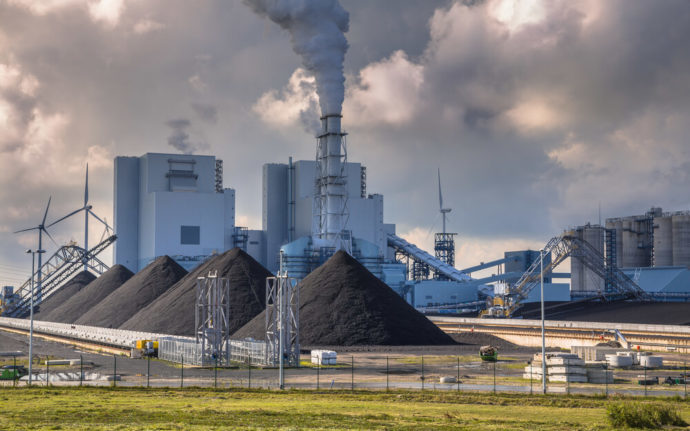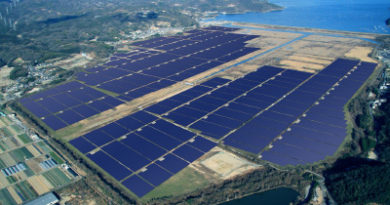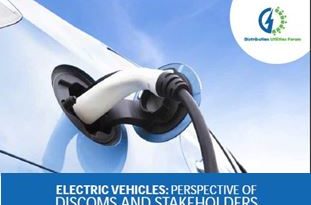5 Questions That Adani Powers 1320 MW Thermal Plant In Madhya Pradesh Raises
 Casting a Shadow Over Renewables
Casting a Shadow Over Renewables
The May 27 announcement by Adani Power of a 1320 MW thermal power deal in Madhya Pradesh raises more questions than it answers. The company’s subsidiary Pench Thermal Energy (MP) has signed a 25 year power purchase agreement (PPA) with MP Power Management Company (MPPMCL) for procurement of 1230 MW of electricity on long term basis from a new power station of 1320 MW capacity to be set up on Super Critical technology in the State of Madhya Pradesh.
The agreement, the first thermal signing across India since the last such PPA in Kerela 5 years ago, was won with a reported bid price of Rs 4.79/unit (Rs 2.90/unit as fixed charge and Rs 1.89/unit variable charge), by Adani Power.
So why is this approval at this stage raising questions? A detailed analysis and feedback from industry experts raises the following key questions.
- Does Madhya Pradesh even need the power? It is no surprise to anyone that one of the reasons for the problems facing the power sector today is massive overcapacity. This has been caused by over optimism on the path of both state, and central agencies like the CEA, which have consistently overestimated demand. Of the 34 stressed projects across India today of over 40GW, 21,614 MW capacity exists without any PPA. In many ways, this capacity is the consequence of a build up that never saw the demand it was created for. Madhya Pradesh has already tied up about 21,000 MW through long-term PPAs even as its peak demand in 2019-20 was 14,886 MW. It is no coincidence that states which have signed up for contracted capacities in excess of actual demand have got some of the most stressed discoms too. Maharashtra and Tamil Nadu are two prime examples, with both signing contracted capacities that are over 40 percent over their peak demand.
- The time factor: The new project is supposed to come up in the next 54 months. That is, by the end of 2026. That, is almost a new generation, as far as technology goes in renewable energy. With recent renewable + storage with round the clock power supply (RTC) bids going for as low as Rs 3.60 per unit, it is inexplicable why Madhya Pradesh would go for this scheme. In all probability, storage costs by 2025 itself will drop to a level where this new project, along with most other thermal projects will be the ones pulling power costs higher for consumers in MP and elsewhere. Most importantly, fresh renewable capacity can come up far more quickly than thermal capacity, especially with the recent propose changes that exempt them from environmental clearances too.
- The stimulus excuse. Madhya Pradesh has apparently given the excuse of the jobs, investments and related benefits from the Rs 12,000 core investment the project will generate. We believe that is a very good reason for the state, but the money is going into precisely the sort of investment where it will not generate long term benefits or returns to the state. By locking on to what will soon be a n expensive source of power for 25 years, generated with a polluting fuel, and with uncertain demand, the state would have been far better off seeking the investment in other areas. Be it off grid renewables, sustainable and green housing, or upgradation of its city infrastructure by the same PPP model. While India is still far away from cutting its dependence on coal, that situation may not last beyond 2030. By that time, just 4 years into the life of this project, coal plants can safely be predicted to come under stricter emission norms, as well as more environmental scrutiny. As that increases costs, who will pay for it? We are predicting Force Majeure, the words of this year. Or the end consumers in MP. in fact, this is precisely the lind of project which could have given an assured order to a large storage firm, to set up manufacturing facilities in India or even Madhya Pradesh itself, as the country targets a 50 GW manufacturing capacity by….2025-26. Well in time for MP’s super optimistic power demand projections.
- Was there no better option available? The central governments SHAKTI (Scheme for Harnessing and Allocating Koyla Transparently in India) policy, has been cited as a reason for the viability of the project, as fuel supply linkages, which have been a bugbear for many projects, has also been approved here. However, it is the same SHAKTI policy which provides for fuel linkages even for projects with no PPAs. In other words, Madhya Pradesh clearly had an option to talk to one or many of the stressed and stranded power projects which had been laid low due to lack of fuel linkages. That it chose not to do it, is mysterious, to say the least. Utilities in better shape than MP utilities are making efforts to procure long term power at prices not exceeding Rs 3.50, and even attempting renegotiation in cases. For MP to commit to Rs 4.80 for 25 years is frankly, amazing. Adani Green Energy, a group firm of Adani Power, just got approval from the CERC for a Solar+Wind project for 600 MW at Ts 2.69 kWh. To come up by 2022! Think about that.
- Missed opportunity to update the contract format. Quite apart from the reasons mentioned above, is the huge opportunity that Madhya Pradesh, a state that has grown above the national average in recent years, has missed to show the way to the future for the power sector. a key element of this future is the need to relook at our PPA structure, which, at 25 years, is anachronistic. Projects today are designed to payback within 7 to 10 years, and even technology changes coming to the sector are massive. Our inflexible PPAs are designed to block any review of terms and conditions. Instead of exit clauses, they have termination clauses. Signing a boiler plate 25 year PPA , after a 5 year gap, is a waste of an opportunity to establish a better way forward.
That the project approval has come in the middle of the crisis caused by the Coronavirus pandemic is no surprise. The state government is chasing large, headline grabbing projects that will give a perception of action. Using coal, a national resource that is increasingly being shunned is also seen as a positive. But most of all, there is the ring of familiarity of old, in going with an established player with a reputation to deliver, using a commodity everyone is comfortable with, with consequences 5 years down the line. Just the kind of safe, closed thinking that we don’t need at this stage in this country.
By Arrangement With SaurEnergy.com




